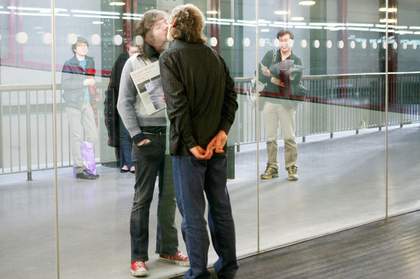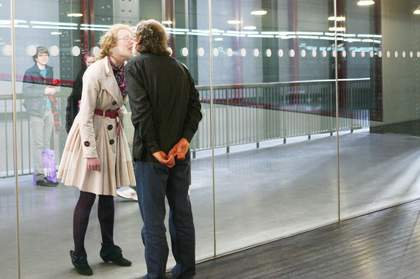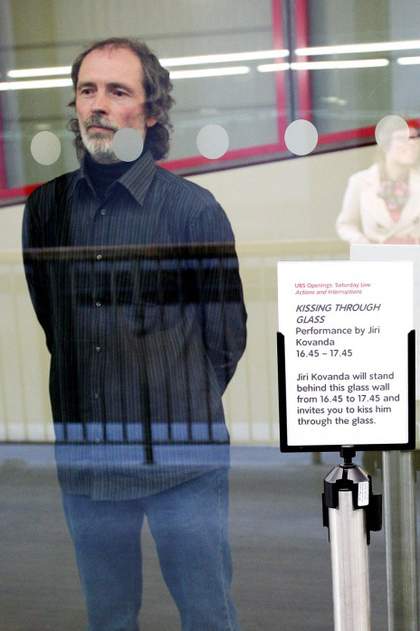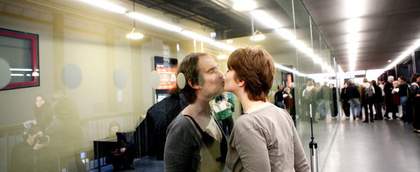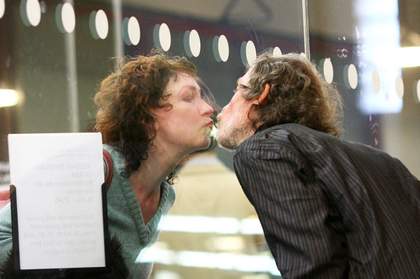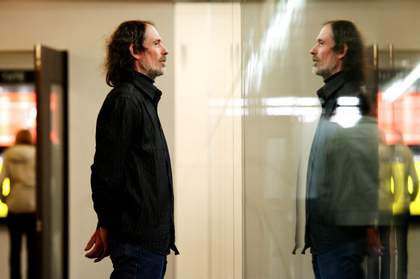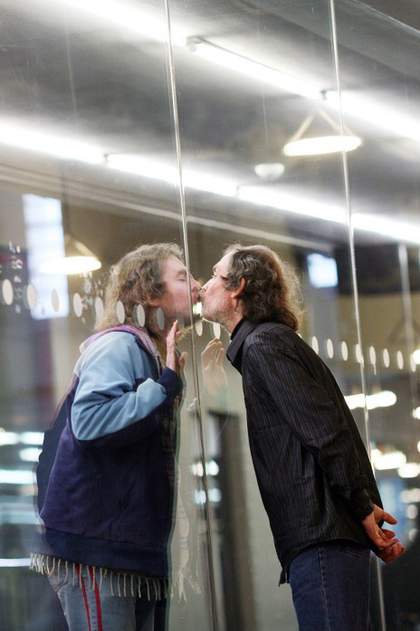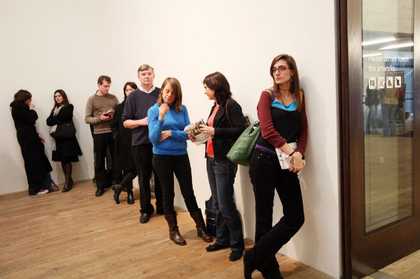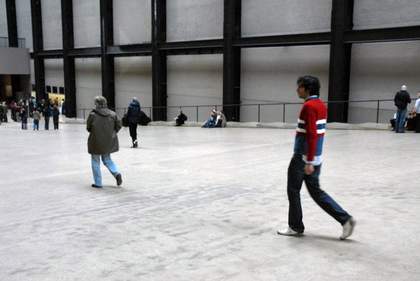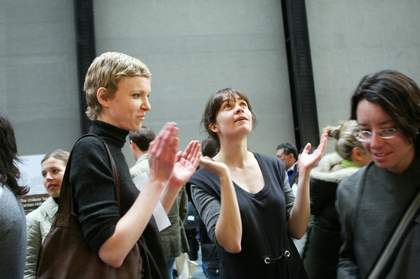Kissing Through Glass was a performance by the Czech artist Jiří Kovanda that took place at Tate Modern on 10 March 2007. The performance took place in the afternoon with Kovanda standing behind a glass wall with a sign next to him inviting those passing by to kiss him through the wall. Kovanda remarked: ‘I’m inviting people to kiss me through a glass wall. It’s about connection – very close but very distant.’1 Kovanda staged a number of works between 11.00 and 18.00 that day, all of which featured unusual ways of behaving in the building. When taking the escalator, he turned around and looked into the eyes of the person standing behind him. When in the public landings and hallways, he would press himself as close as possible to the wall and make his way around the room without breaking contact.
The performance was part of UBS Openings: Saturday Live – Actions and Interruptions. The event was a day of activity throughout the museum that explored performance as a feature of everyday interaction, rather than as a discreet theatrical activity. Anthropological in focus, the programme examined the rituals of behaviour performed by people inside the museum. Each artist made use of various locations throughout the galleries and public spaces. Unlike some of the performances by other artists designed as subtle or even ‘invisible’ actions, Kovanda’s contributions to the day called attention to themselves and invited participation by members of the public.
These experimental interventions made unconventional use of the museum’s spaces and thereby challenged assumptions about the ways we act in everyday life. Kovanda’s prompts were extensions or repetitions of earlier actions that he first began to develop in Prague in the 1970s. These subtle invitations to interrupt usual manners and habits carried a very different political charge in the Soviet state. In that context, activity in public spaces was more restricted and surveilled. He started making minimal performances centred on non-verbal and unexpected encounters in public spaces. These works engaged with either random passers-by or informed spectators. For one of his first actions, in 1976, Kovanda asked a man and a woman to kiss each other while standing barefoot in freshly mixed concrete. As if noting the results of a scientific experiment, Kovanda then typed his observations on a sheet of paper, including the title, Kiss, location and exact date, 11 May 1976. Kovanda’s vision for a moment of ‘closeness’, through the political chasm or ‘distance’, was to create a liberating moment of openness with another member of the public.
Although Kovanda has rejected the description of ‘political artist’, it is undeniable that politics comes into play when comparing the performance in 1976 to its restaging at Tate Modern in 2007. However, Kovanda’s original interest in the contrast between personal closeness and public setting was displaced toward an interrogation of the sleek architecture of Tate Modern. Kovanda was particularly concerned with breaking down divisions between interior and exterior, as well as the straight lines and established pathways through the museum. By inviting people to kiss him through these walls, he initiated a sensuous encounter to explore separation and connection within and against the surrounding architecture. This created a stage for different experiences to play out, from the joy of a small child, to awkwardness and embarrassment, laughter and tenderness.
Philomena Epps
April 2016

